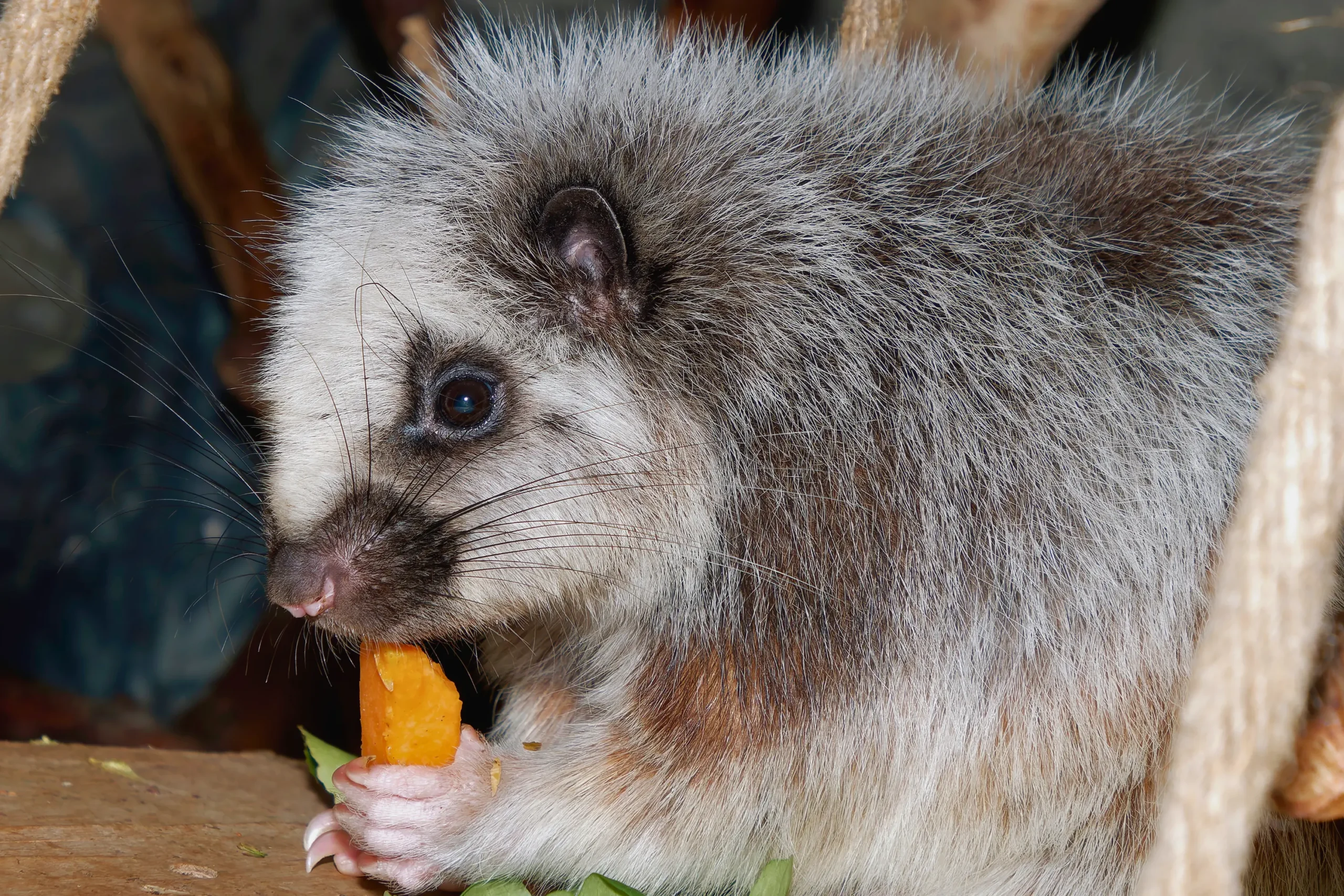We have housed Luzon giant cloud rats at our Zoo for more than twelve years. These remarkable animals, which are native to the Philippines, have been successfully bred at our Zoo on numerous occasions. You can spot the giant cloud rats in the Magic Mountain.

When it comes to showcasing unique and lesser-known animal species, we always highlight that our goal is not only to present popular animals familiar to the public, but also to introduce species that may be completely new to many of our visitors, as promoting scientific knowledge and showcasing the diversity of wildlife are important responsibilities of our institution. This is one of the main reasons why we keep Luzon giant cloud rats, and indeed, many people know this species primarily because they first encountered it here at our Zoo.
As a rodent, the Luzon giant cloud rat (Phloemys pallidus) is part of the Muridae family. Weighing between 2 and 3 kilograms, it is among the largest members of the mouse family. As its name implies, this species is native to Luzon, the largest island in the Philippines, located in Southeast Asia. It’s a tropical, forest-dwelling animal that spends much of its time in the trees, navigating the branches. Its clawed toes make it perfectly suited for climbing tree bark, which is why it’s known as “kéregpatkány” (bark rat) in Hungarian.
The cloud rat primarily feeds on leaves, fresh shoots, and a variety of fruits. This nocturnal animal lives either alone or with a mate, and the young stay with the parents for a while before eventually venturing out on their own. Unlike most rodents, such as mice and rats, that belong to the same family, it typically gives birth to only one (or occasionally two) offspring per litter. For the first five months of life, the young are nourished by their mother’s milk, and they typically reach maturity between 8 and 18 months. It seems to defend itself effectively against predators, as most rodents have many offspring to compensate for the fact that predators often reduce their numbers significantly. The Luzon giant cloud rat also has a distinctive fruity-musk scent which, while not entirely unpleasant, might be enough to make potential predators think twice.
Fortunately, the Luzon giant cloud rat is currently not considered endangered and is still relatively common today, even though in some parts of its native range, local communities not only consume it but also use its skin to make small bags, belts, and hats.
If someone wants to look up more information about these animals, it’s useful to know that both the Luzon giant cloud rat and its close relative, the Southern giant slender-tailed cloud rat (Phloemys cumingi), are occasionally referred to in Hungarian as “ködpatkány” (fog rat), which inaccurate. While the English term “cloud rat” appears in both species’ names, and could literally be translated as “ködpatkány” in Hungarian, a more accurate translation would be “felhőpatkány” or “fellegpatkány.” However, the term “cloud rat” also used in the English names of other rodents, most notably the four species belonging to the genus Crateromys. Hungarian naming conventions are somewhat more consistent than their English counterparts, only the Crateromys species are called “cloud rats,” while the two Phloemys species go by the name “kéregpatkány” (bark rat). The explanation is actually quite straightforward. If we follow the more than two-century-old tradition of Hungarian scientific literature, there is no need to rely on English names when establishing Hungarian ones. Alternatively, when translating, it’s actually better to go with the Latinized, but originally Greek name Phloemys, which comes from “phloem”, meaning bark, and “mys”, meaning mouse or rat. Moreover, the confusion between the bark rat and the cloud rat can cause problems, because not only does the bark rat have a species named after Luzon Island, but there is also a cloud rat species with the same naming origin.
We’ve had Luzon cloud rats at our Zoo since 2012. No records have been found in the old documents indicating that this species had previously been kept. For the past 12 years, visitors have had the opportunity to regularly observe these animals: at first, they were housed in the Xántus House, but for years now, they’ve been living in the Magic Mountain. We have successfully bred them on numerous occasions.